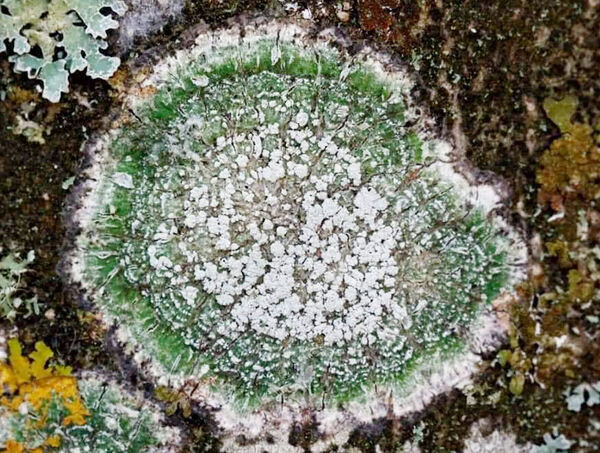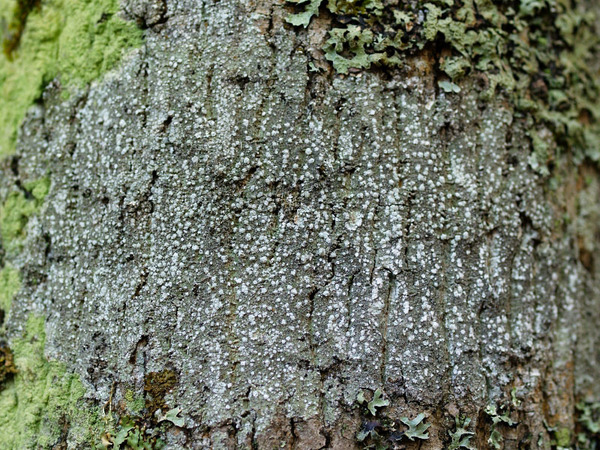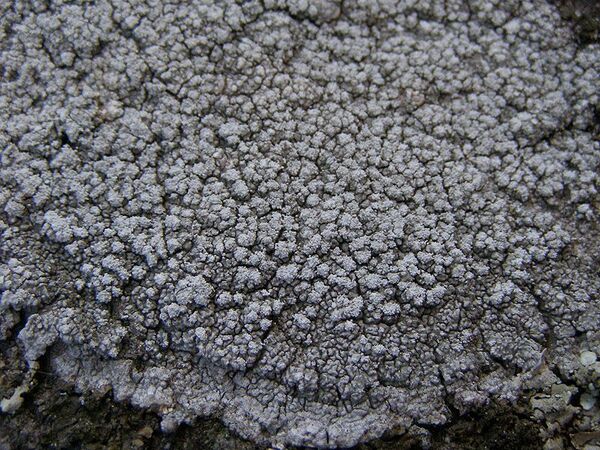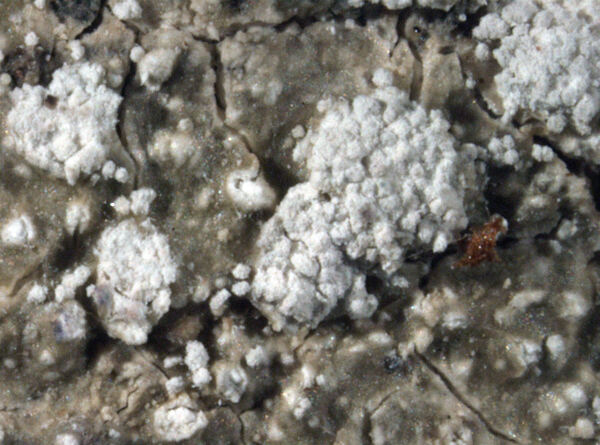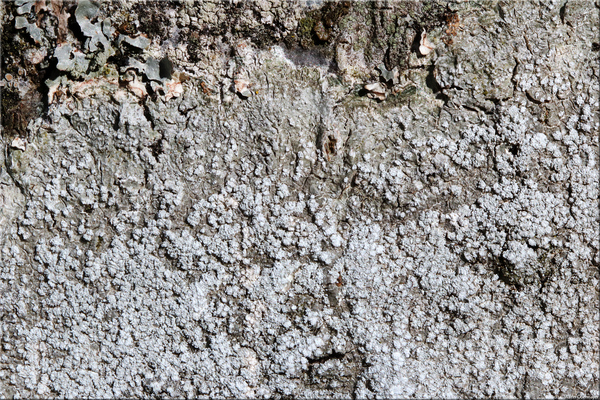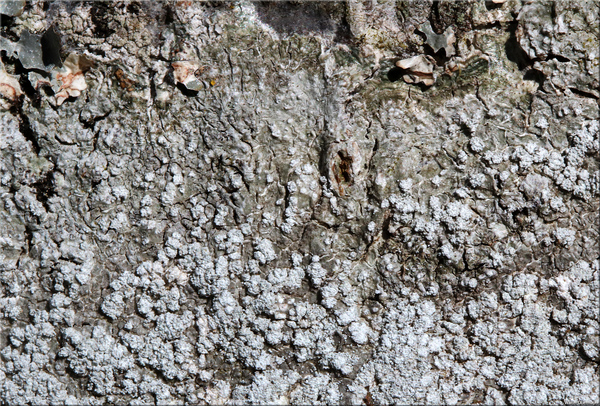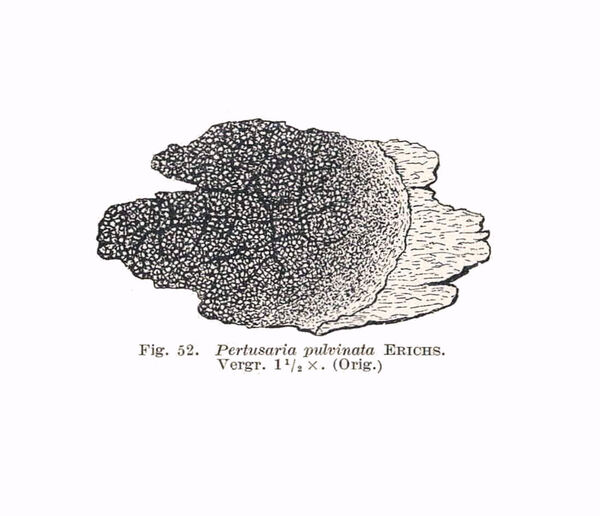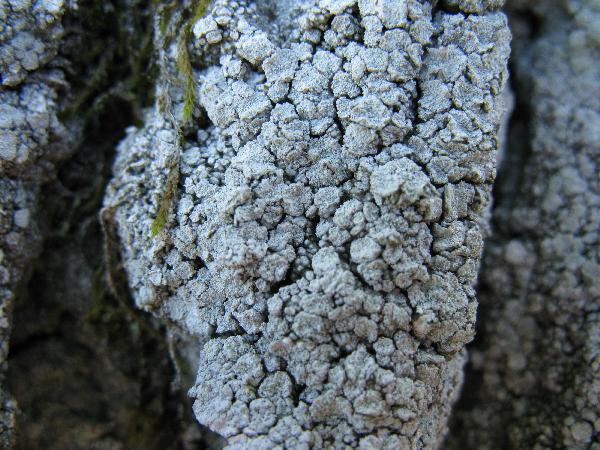Lepra amara (Ach.) Hafellner
in Hafellner & Türk, Stapfia, 104: 171, 2016. Basionym: Variolaria amara Ach. - K. Vetensk.-Akad. Nya Handl., 30, 3: 163, 1809.
Synonyms: Marfloraea amara (Ach.) S. Y. Kondr., L. Lőkös & J.-S. Hur; Pertusaria amara (Ach.) Nyl. var. amara; Pertusaria amara f. isidiata Harm.; Pertusaria communis var. amara (Ach.) Rabenh.; Pertusaria faginea auct. ital. p.p. non (L.) Leight.
Distribution: N - VG (Carvalho 1997, Craighero 2010), Frl (Craighero 2010, Brackel 2013), Ven (Nascimbene & Caniglia 1997, 2000b, 2002c, Lazzarin 1997, Caniglia & al. 1999, Nascimbene 2005c, 2008c, 2011, Nascimbene & al. 2005b, 2006, 2006c, 2006e, 2007, 2013b, Nascimbene & Marini 2007, 2010, Craighero 2010), TAA (Hinteregger 1994, Nascimbene & Caniglia 2000b, 2003c, Caniglia & al. 2002, Nascimbene 2003, 2005b, 2006b, 2006c, 2008b, 2014, Gottardini & al. 2004, Nascimbene & al. 2006e, 2007b, 2009, 2010, 2014, 2022, Thor & Nascimbene 2007, Zarabska & al. 2009, Nascimbene & Marini 2015, Nimis & al. 2015, Trindade & al. 2021), Lomb (Zocchi & al. 1997, Valcuvia & al. 2003, Dalle Vedove & al. 2004, Furlanetto 2010, Gheza & al. 2023), Piem (Arosio & al. 1998, Piervittori 2003, Isocrono & al. 2005b, Craighero 2010, Furlanetto 2010, Giordani & Malaspina 2016), VA (Piervittori & Isocrono 1999), Emil (Nimis & al. 1996, Dalle Vedove & al. 2002, Marconi & al. 2006, Tretiach & al. 2008, Benesperi 2009, Craighero 2010, Brackel 2015, Fariselli & al. 2020), Lig (Brunialti & al. 1999, Putortì & al. 1999b, Giordani & al. 2001, 2002, 2025, Brunialti & Giordani 2003, Giordani 2006, Giordani & Incerti 2008, Craighero 2010, Watson 2014). C - Tosc (Loppi & al. 1994, 1995, 1996c, 1997, 1997b, 1998, 1998b, 2002b, 2002c, 2006, Tretiach & Nimis 1994, Loppi & Putortì 1995, 1995b, Loppi 1996, Loppi & De Dominicis 1996, Loppi & Nascimbene 1998, 2010, Putortì & al. 1998, 1999, Putortì & Loppi 1999, 1999b, Benesperi 2000a, 2006, 2011, Loppi & Frati 2006, Ravera & al. 2006, Stofer 2006, Benesperi & al. 2007, Pasquinelli & al. 2009, Brunialti & Frati 2010, Craighero 2010, Pasquinelli & Puccini 2010, Brunialti & al. 2012b, Paoli & al. 2012, Brackel 2015, Nascimbene & al. 2015, Frati & Brunialti 2023), Marc (Nimis & Tretiach 1999, Frati & Brunialti 2006, Brackel 2015), Umb (Ravera 1998, Panfili 2000b, Craighero 2010, Brackel 2015), Laz (Bartoli & al. 1997, Ravera 2002, 2006c, Massari & Ravera 2002, Nimis & Tretiach 2004, Ruisi & al. 2005, Ravera & Genovesi 2008, Craighero 2010, Zucconi & al. 2013, Brackel 2015), Abr (Nimis & Tretiach 1999, Stofer 2006, Craighero 2010, Caporale & al. 2016, Corona & al. 2016), Mol (Garofalo & al. 1999, Nimis & Tretiach 1999, Caporale & al. 2008, Ravera & al. 2010, Craighero 2010, Genovesi & Ravera 2014, Paoli & al. 2015, Brackel 2020, Caporale & Ravera 2020), Sar (Monte 1993, Zedda 1995, 2002, 2002b, Loi & al. 2000, Zedda & al. 2001, Craighero 2010, Rizzi & al. 2011, Cossu 2013, Neuwirth 2018, Brackel & Berger 2019, Lich. Ital. Exs. 41: Isocrono & al. 2020, Di Nuzzo & al. 2022). S - Camp (Garofalo & al. 1999, 2010, Aprile & al. 2003, 2003b, Nimis & Tretiach 2004, Brunialti & al. 2010, 2013, Catalano & al. 2010, 2016, Craighero 2010, Ravera & Brunialti 2013), Pugl (Nimis & Tretiach 1999, Craighero 2010), Bas (Bartoli & Puntillo 1998, Nimis & Tretiach 1999, Potenza 2006, Craighero 2010, Brackel 2011, Cassola & al. 2025), Cal (Puntillo 1995, 1996, Puntillo & Puntillo 2004, Incerti & Nimis 2006, Stofer 2006, Craighero 2010, Brackel & Puntillo 2016), Si (Nimis & al. 1994, 1995, Ottonello & Salone 1994, Ottonello & al. 1994, Ottonello 1996, Ottonello & Romano 1997, Schicchi & al. 1997, Grillo 1998, Grillo & Caniglia 2004, Caniglia & Grillo 2006b, Stofer 2006, Craighero 2010, Brackel 2008b, Campisi & al. 2020).
Description: Thallus crustose, episubstratic, continuous to fissured, whitish, pale grey or pale greenish grey, often weakly zoned at margin, delimited by a white prothallus, sorediate, tasting extremely bitter. Central parts of thallus with numerous, circular, 0.5-1.5(-2) mm wide, white, usually convex to hemispherical soralia which long remain discrete and are sometimes arranged in concentric lines, rarely becoming confluent in central parts. In some forms the thallus is denseluy covered in warts that break down apically into small, elevated, punctiform soralia, never forming discrete round soralia. Apothecia extremely rare, immersed in soralia-like warts and not visible without sectioning the warts, the disc densely white-pruinose. Hymenium colourless, the hymenial gel not or only weakly amyloid; paraphyses lax, branched and richly anastomosing; hypothecium colourless. Asci 1-spored, broadly cylindrical, the apex without a distinct ocular chamber, the outer sheath K/I+ blue, otherwise K/I–, with an inner extensible layer, Pertusaria-type. Ascospores 1-celled, hyaline, ellipsoid, 130-150 x 40-50 µm. Photobiont chlorococcoid. Spot tests: cortex K- or K+ yellow turning orange-red, C-, KC-, P- or P+ yellow to red; soralia and medulla K- or K+ yellow turning orange-red, C-, KC+ fleeting violet, P- or P+ yellow to red, UV-. Chemistry: picrolichenic acid; a chemotype with additional protocetraric and conprotocetraric acids is also widespread. Note: a widespread holarctic lichen, certainly the most common epiphytic species of the genus throughout Italy, with a wide ecological range. It often behaves as an aggressive competitor, being able to overgrow other crustose lichens and sometimes even bryophytes. According to Craighero (2010) two chemotypes are present in Italy, one with the pycrolichenic acid syndrome only, the other with additional protocetraric acid; the two chemotypes have a somewhat different distribution within the country, the latter being most frequent in Tyrrhenian Italy.
Growth form: Crustose
Substrata: bark
Photobiont: green algae other than Trentepohlia
Reproductive strategy: mainly asexual, by soredia, or soredia-like structures (e.g. blastidia)
Commonnes-rarity: (info)
Alpine belt: very rare
Subalpine belt: rather rare
Oromediterranean belt: rare
Montane belt: very common
Submediterranean belt: common
Padanian area: extremely rare
Humid submediterranean belt: very common
Humid mediterranean belt: common
Dry mediterranean belt: very rare
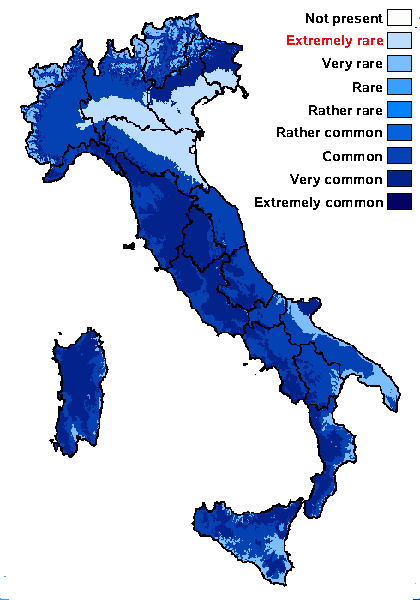
Predictive model
Herbarium samples


P.L. Nimis; Owner: Department of Life Sciences, University of Trieste
Herbarium: TSB (34864)
2002/02/16
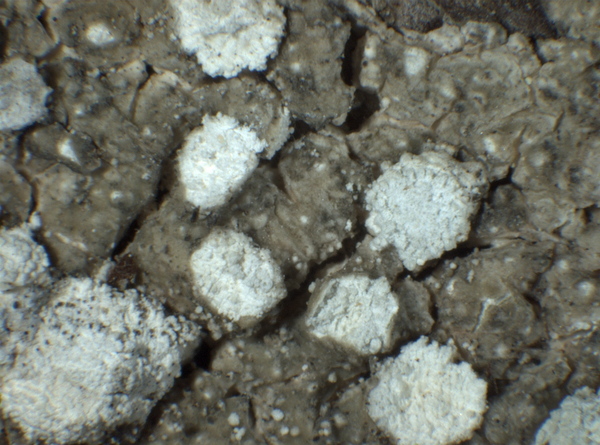

P.L.Nimis; Owner: Department of Life Sciences, University of Trieste
Herbarium: TSB (36782)
2008.02.28
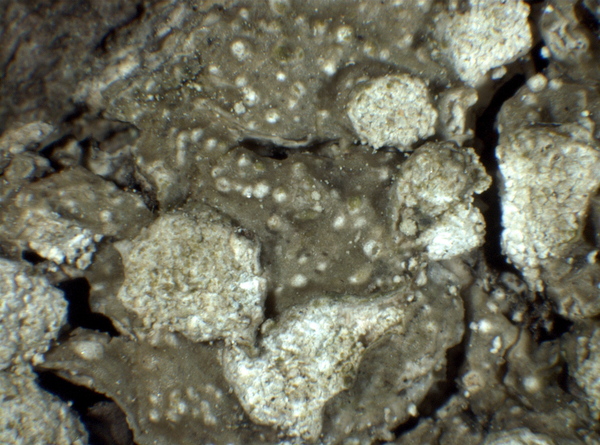

P.L.Nimis; Owner: Department of Life Sciences, University of Trieste
Herbarium: TSB (36782)
2008.02.28
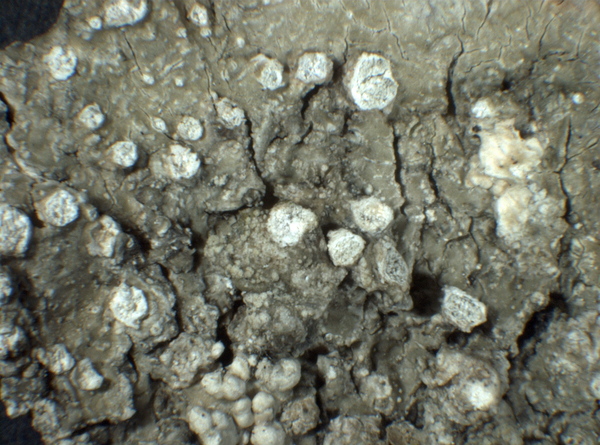

P.L.Nimis; Owner: Department of Life Sciences, University of Trieste
Herbarium: TSB (36782)
2008.02.28


Andrea Moro; Owner: Department of Life Sciences, University of Trieste
Italy, Friuli Venezia Giulia, Udine, Lago di Sauris, Bosco della Stua, Carnic Alps (Ampezzo Carnico) 1000 m; altitude: 1000 m
12/08/2017
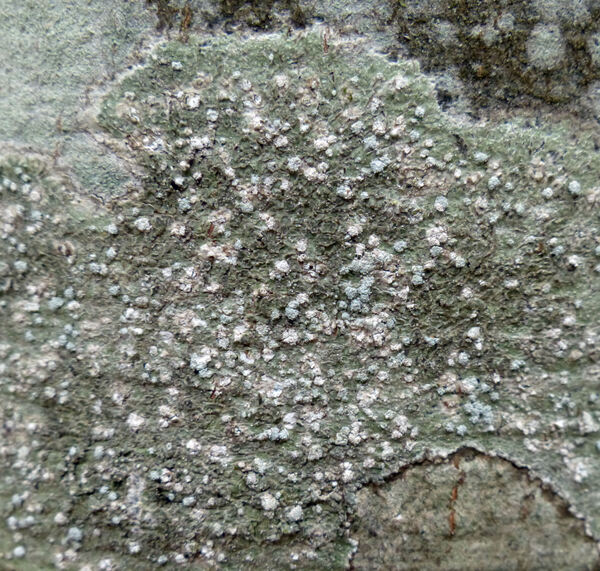

Andrea Moro; Owner: Department of Life Sciences, University of Trieste
Italy, Friuli Venezia Giulia, Udine, Lago di Sauris, Bosco della Stua, Carnic Alps (Ampezzo Carnico) 1000 m; altitude: 1000 m
12/08/2017
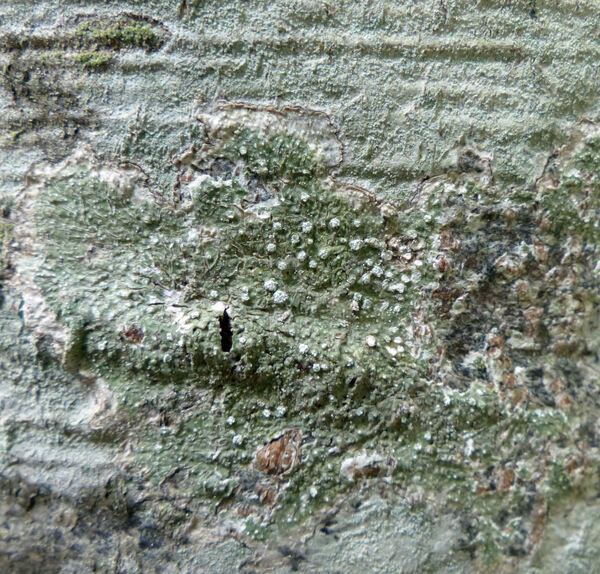

Andrea Moro; Owner: Department of Life Sciences, University of Trieste
Italy, Friuli Venezia Giulia, Udine, Lago di Sauris, Bosco della Stua, Carnic Alps (Ampezzo Carnico) 1000 m; altitude: 1000 m
12/08/2017
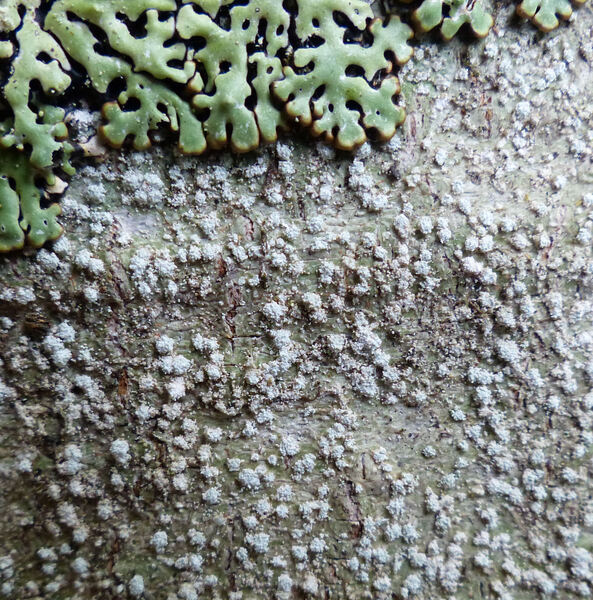

Andrea Moro; Owner: Department of Life Sciences, University of Trieste
Italy, Friuli Venezia Giulia, Udine, Lago di Sauris, Bosco della Stua, Carnic Alps (Ampezzo Carnico) 1000 m; altitude: 1000 m
12/08/2017
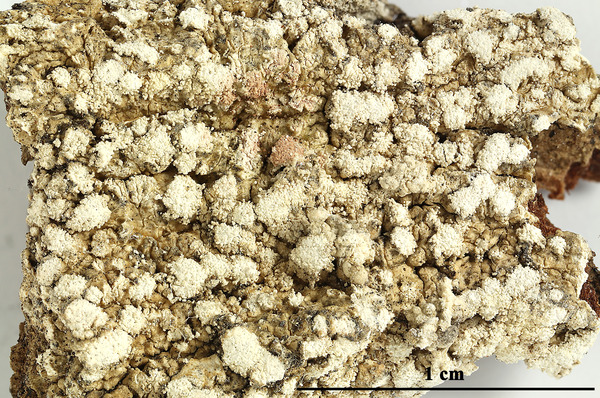

Felix Schumm - CC BY-SA 4.0
[1320], Germany, Baden-Württemberg, Kreis Göppingen, Marbachtal bei Zell-Börtlingen, an Quercus, ca. 350 m, TK 7223. Leg. et det. F. Schumm 01.10.1967.
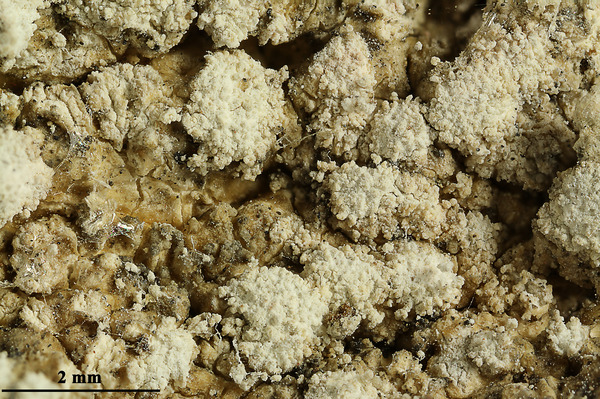

Felix Schumm - CC BY-SA 4.0
[1320], Germany, Baden-Württemberg, Kreis Göppingen, Marbachtal bei Zell-Börtlingen, an Quercus, ca. 350 m, TK 7223. Leg. et det. F. Schumm 01.10.1967.
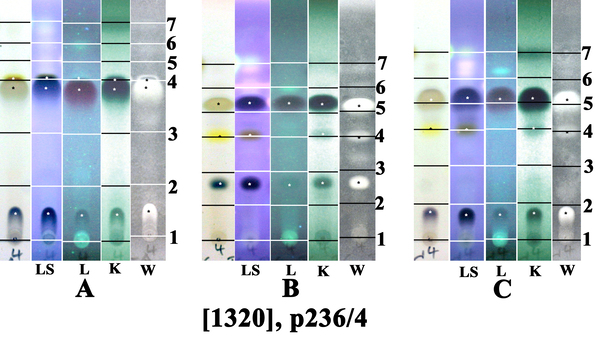

Felix Schumm - CC BY-SA 4.0
[1320], Germany, Baden-Württemberg, Kreis Göppingen, Marbachtal bei Zell-Börtlingen, an Quercus, ca. 350 m, TK 7223. Leg. et det. F. Schumm 01.10.1967.
1: picrolichenic acid, 2: norstictic acid, 3: protocetraric acid, conf. J.A. Elix
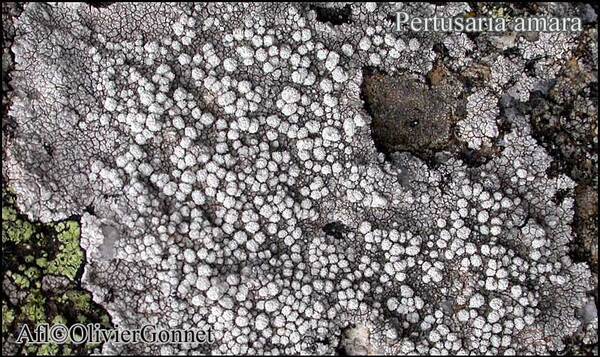
Courtesy Danièle et Olivier Gonnet - Source: https://www.afl-lichenologie.fr/Photos_AFL/Photos_AFL_L/Texte_L_4/Lepra_amara.htm
France, sur écorce - session AFL 2005 en Lozère
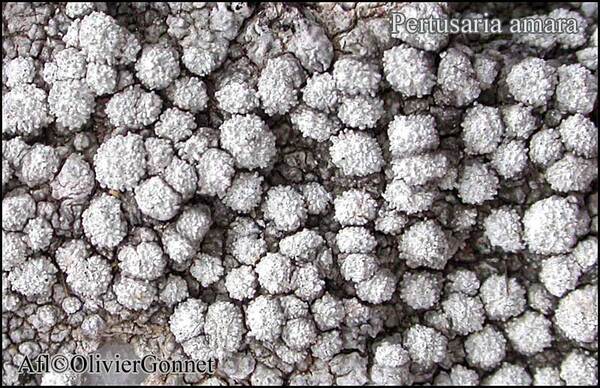
Courtesy Danièle et Olivier Gonnet - Source: https://www.afl-lichenologie.fr/Photos_AFL/Photos_AFL_L/Texte_L_4/Lepra_amara.htm
France, sur écorce - session AFL 2005 en Lozère
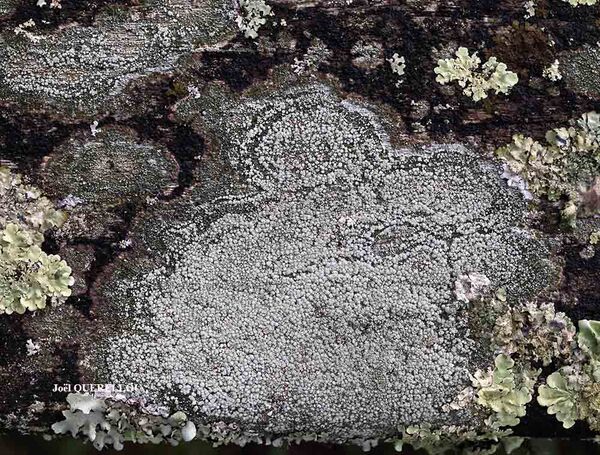
Joël Querellou - Source: http://www.lichensmaritimes.org/index.php?task=fiche&lichen=977&lang=en
France, Daoulas
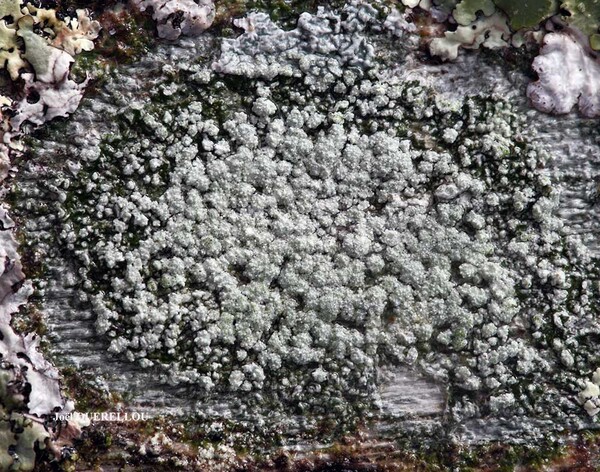
Joël Querellou - Source: http://www.lichensmaritimes.org/index.php?task=fiche&lichen=977&lang=en
France, Daoulas
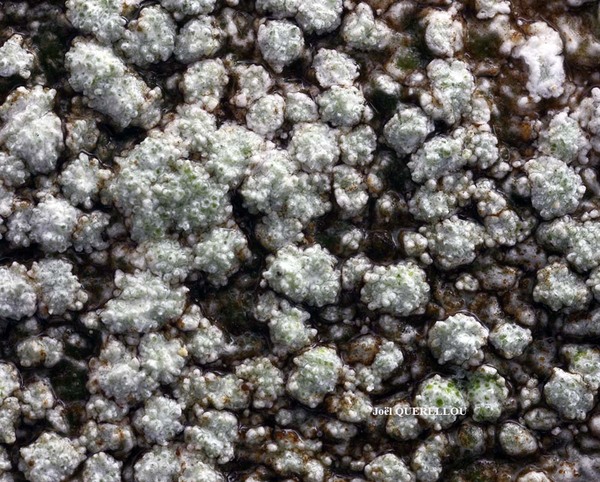
Joël Querellou - Source: http://www.lichensmaritimes.org/index.php?task=fiche&lichen=977&lang=en
France, Daoulas

Joël Querellou - Source: http://www.lichensmaritimes.org/index.php?task=fiche&lichen=977&lang=en
France, Daoulas
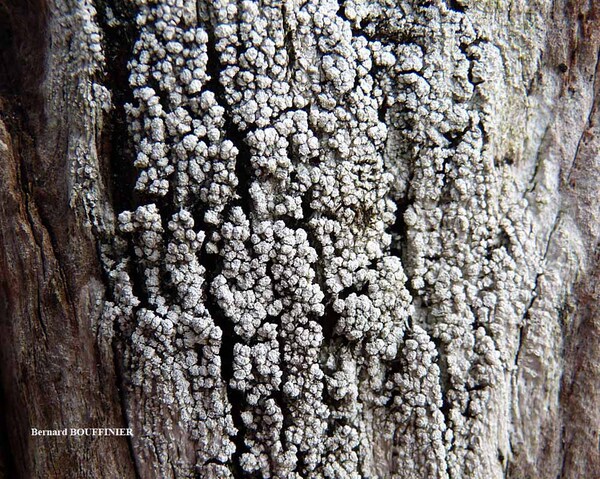
Bernard Bouffinier - Source: http://www.lichensmaritimes.org/index.php?task=fiche&lichen=977&lang=en
France, Menez-Meur

Bernard Bouffinier - Source: http://www.lichensmaritimes.org/index.php?task=fiche&lichen=977&lang=en
France, Lesteven
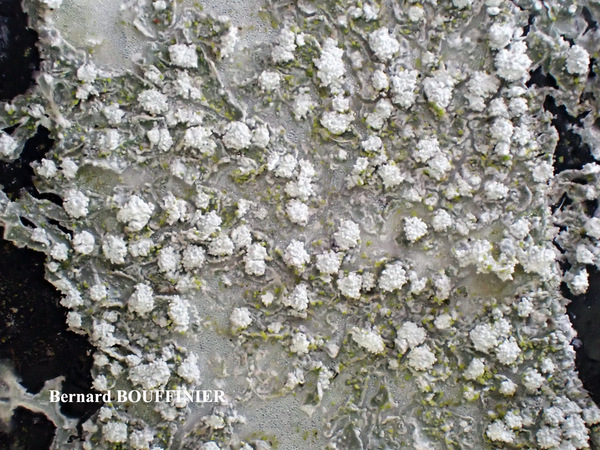
Bernard Bouffinier - Source: http://www.lichensmaritimes.org/index.php?task=fiche&lichen=1268&lang=en
France, Le Juc'h
on an enamelled iron road sign
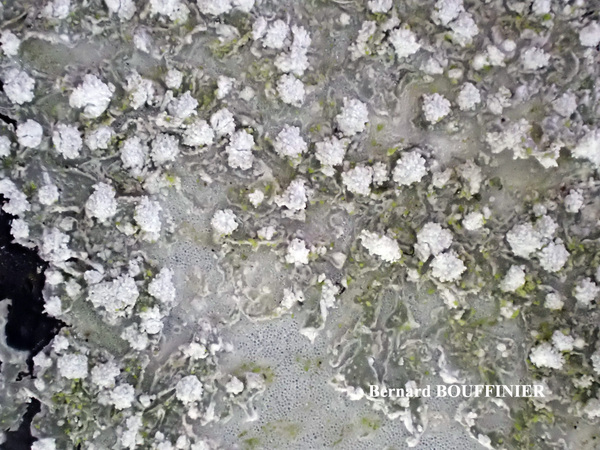
Bernard Bouffinier - Source: http://www.lichensmaritimes.org/index.php?task=fiche&lichen=1268&lang=en
France, Le Juc'h
on an enamelled iron road sign
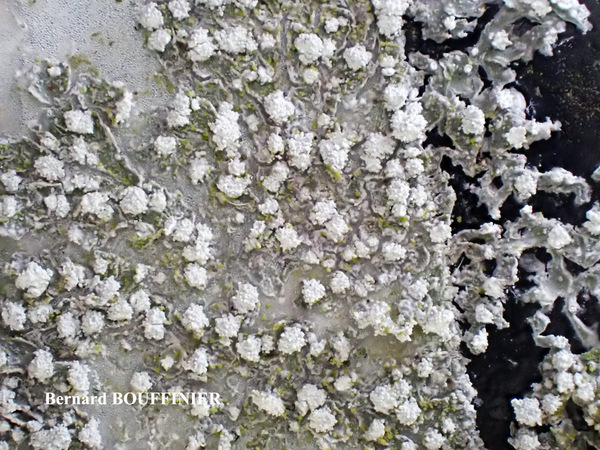
Bernard Bouffinier - Source: http://www.lichensmaritimes.org/index.php?task=fiche&lichen=1268&lang=en
France, Le Juc'h
on an enamelled iron road sign
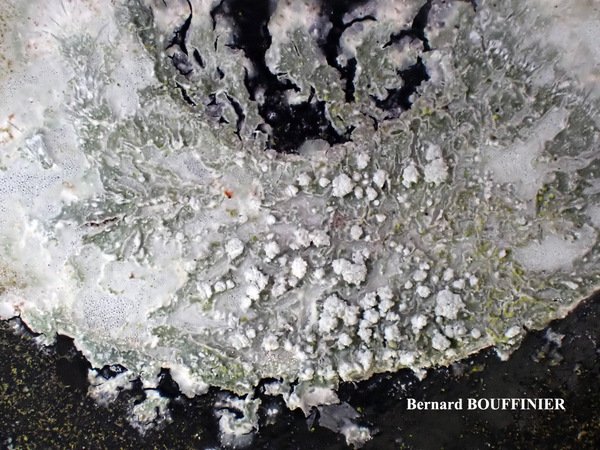
Bernard Bouffinier - Source: http://www.lichensmaritimes.org/index.php?task=fiche&lichen=1268&lang=en
France, Le Juc'h
on an enamelled iron road sign
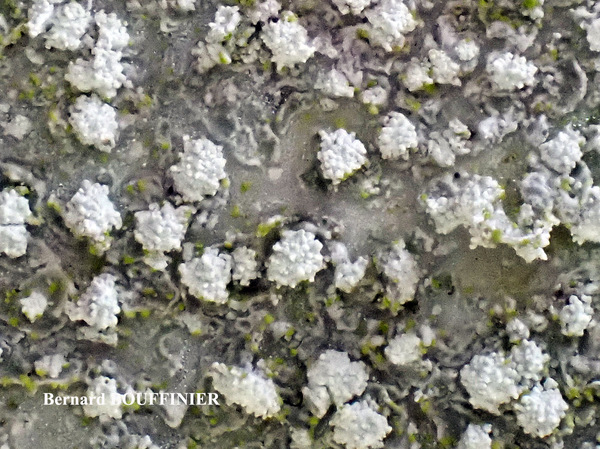
Bernard Bouffinier - Source: http://www.lichensmaritimes.org/index.php?task=fiche&lichen=1268&lang=en
France, Le Juc'h
on an enamelled iron road sign

Ulrich Kirschbaum CC BY-SA 4.0 - Source: https://www.thm.de/lse/ulrich-kirschbaum/flechtenbilder
Central Europe; Germany: Hesse.
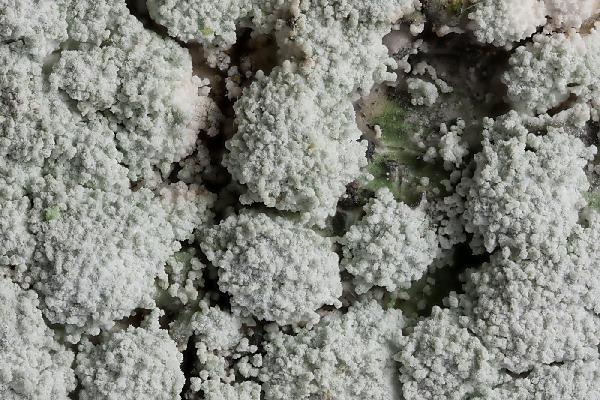
Ulrich Kirschbaum CC BY-SA 4.0 - Source: https://www.thm.de/lse/ulrich-kirschbaum/flechtenbilder
Central Europe; Germany: Hesse.


Felix Schumm - CC BY-SA 4.0
[13626], Germany, Baden-Württemberg, Kreis Göppingen, südwestlich
von Adelberg nahe dem Herrenbachstausee, Buhwiesenweg, an Laubbaum
im Mischwald, ca. 48°44'N, 9°33'E, 412 m, TK: 7223. Leg. et
det. F. Schumm, 08.02.2008. - Sorale K-, C-, KC+ violett, P+ rostrot,
UVL+ düster grünlichgelb, UVK
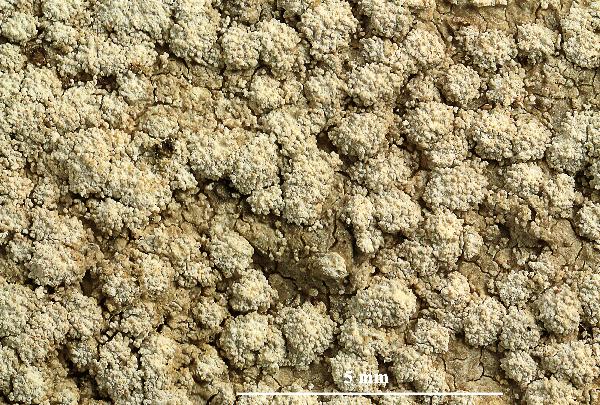

Felix Schumm - CC BY-SA 4.0
[13626], Germany, Baden-Württemberg, Kreis Göppingen, südwestlich
von Adelberg nahe dem Herrenbachstausee, Buhwiesenweg, an Laubbaum
im Mischwald, ca. 48°44'N, 9°33'E, 412 m, TK: 7223. Leg. et
det. F. Schumm, 08.02.2008. - Sorale K-, C-, KC+ violett, P+ rostrot,
UVL+ düster grünlichgelb, UVK


Felix Schumm - CC BY-SA 4.0
[13626], Germany, Baden-Württemberg, Kreis Göppingen, südwestlich
von Adelberg nahe dem Herrenbachstausee, Buhwiesenweg, an Laubbaum
im Mischwald, ca. 48°44'N, 9°33'E, 412 m, TK: 7223. Leg. et
det. F. Schumm, 08.02.2008. - Sorale K-, C-, KC+ violett, P+ rostrot,
UVL+ düster grünlichgelb, UVK


Felix Schumm - CC BY-SA 4.0
[13626], Germany, Baden-Württemberg, Kreis Göppingen, südwestlich
von Adelberg nahe dem Herrenbachstausee, Buhwiesenweg, an Laubbaum
im Mischwald, ca. 48°44'N, 9°33'E, 412 m, TK: 7223. Leg. et
det. F. Schumm, 08.02.2008. - Sorale K-, C-, KC+ violett, P+ rostrot,
UVL+ düster grünlichgelb, UVK

Erichsen C.F.E. 1936. Pertusariaceae. - In: Dr. L. Rabenhorsts Kryptogamenflora von Deutschland, Österreich und der Schweiz. Bd. IX, Abt. 5, T. 1. Akad. Verlagsges., Leipzig, pp. 321-512, 513-728. - Public Domain

Erichsen C.F.E. 1936. Pertusariaceae. - In: Dr. L. Rabenhorsts Kryptogamenflora von Deutschland, Österreich und der Schweiz. Bd. IX, Abt. 5, T. 1. Akad. Verlagsges., Leipzig, pp. 321-512, 513-728. - Public Domain
Growth form: Crustose
Substrata: bark
Photobiont: green algae other than Trentepohlia
Reproductive strategy: mainly asexual, by soredia, or soredia-like structures (e.g. blastidia)
Commonnes-rarity: (info)
Alpine belt: very rare
Subalpine belt: rather rare
Oromediterranean belt: rare
Montane belt: very common
Submediterranean belt: common
Padanian area: extremely rare
Humid submediterranean belt: very common
Humid mediterranean belt: common
Dry mediterranean belt: very rare

Predictive model
| Herbarium samples |


P.L. Nimis; Owner: Department of Life Sciences, University of Trieste
Herbarium: TSB (34864)
2002/02/16


P.L.Nimis; Owner: Department of Life Sciences, University of Trieste
Herbarium: TSB (36782)
2008.02.28


P.L.Nimis; Owner: Department of Life Sciences, University of Trieste
Herbarium: TSB (36782)
2008.02.28


P.L.Nimis; Owner: Department of Life Sciences, University of Trieste
Herbarium: TSB (36782)
2008.02.28


Andrea Moro; Owner: Department of Life Sciences, University of Trieste
Italy, Friuli Venezia Giulia, Udine, Lago di Sauris, Bosco della Stua, Carnic Alps (Ampezzo Carnico) 1000 m; altitude: 1000 m
12/08/2017


Andrea Moro; Owner: Department of Life Sciences, University of Trieste
Italy, Friuli Venezia Giulia, Udine, Lago di Sauris, Bosco della Stua, Carnic Alps (Ampezzo Carnico) 1000 m; altitude: 1000 m
12/08/2017


Andrea Moro; Owner: Department of Life Sciences, University of Trieste
Italy, Friuli Venezia Giulia, Udine, Lago di Sauris, Bosco della Stua, Carnic Alps (Ampezzo Carnico) 1000 m; altitude: 1000 m
12/08/2017


Andrea Moro; Owner: Department of Life Sciences, University of Trieste
Italy, Friuli Venezia Giulia, Udine, Lago di Sauris, Bosco della Stua, Carnic Alps (Ampezzo Carnico) 1000 m; altitude: 1000 m
12/08/2017


Felix Schumm - CC BY-SA 4.0
[1320], Germany, Baden-Württemberg, Kreis Göppingen, Marbachtal bei Zell-Börtlingen, an Quercus, ca. 350 m, TK 7223. Leg. et det. F. Schumm 01.10.1967.


Felix Schumm - CC BY-SA 4.0
[1320], Germany, Baden-Württemberg, Kreis Göppingen, Marbachtal bei Zell-Börtlingen, an Quercus, ca. 350 m, TK 7223. Leg. et det. F. Schumm 01.10.1967.


Felix Schumm - CC BY-SA 4.0
[1320], Germany, Baden-Württemberg, Kreis Göppingen, Marbachtal bei Zell-Börtlingen, an Quercus, ca. 350 m, TK 7223. Leg. et det. F. Schumm 01.10.1967.
1: picrolichenic acid, 2: norstictic acid, 3: protocetraric acid, conf. J.A. Elix

Courtesy Danièle et Olivier Gonnet - Source: https://www.afl-lichenologie.fr/Photos_AFL/Photos_AFL_L/Texte_L_4/Lepra_amara.htm
France, sur écorce - session AFL 2005 en Lozère

Courtesy Danièle et Olivier Gonnet - Source: https://www.afl-lichenologie.fr/Photos_AFL/Photos_AFL_L/Texte_L_4/Lepra_amara.htm
France, sur écorce - session AFL 2005 en Lozère

Joël Querellou - Source: http://www.lichensmaritimes.org/index.php?task=fiche&lichen=977&lang=en
France, Daoulas

Joël Querellou - Source: http://www.lichensmaritimes.org/index.php?task=fiche&lichen=977&lang=en
France, Daoulas

Joël Querellou - Source: http://www.lichensmaritimes.org/index.php?task=fiche&lichen=977&lang=en
France, Daoulas

Joël Querellou - Source: http://www.lichensmaritimes.org/index.php?task=fiche&lichen=977&lang=en
France, Daoulas

Bernard Bouffinier - Source: http://www.lichensmaritimes.org/index.php?task=fiche&lichen=977&lang=en
France, Menez-Meur

Bernard Bouffinier - Source: http://www.lichensmaritimes.org/index.php?task=fiche&lichen=977&lang=en
France, Lesteven

Bernard Bouffinier - Source: http://www.lichensmaritimes.org/index.php?task=fiche&lichen=1268&lang=en
France, Le Juc'h
on an enamelled iron road sign

Bernard Bouffinier - Source: http://www.lichensmaritimes.org/index.php?task=fiche&lichen=1268&lang=en
France, Le Juc'h
on an enamelled iron road sign

Bernard Bouffinier - Source: http://www.lichensmaritimes.org/index.php?task=fiche&lichen=1268&lang=en
France, Le Juc'h
on an enamelled iron road sign

Bernard Bouffinier - Source: http://www.lichensmaritimes.org/index.php?task=fiche&lichen=1268&lang=en
France, Le Juc'h
on an enamelled iron road sign

Bernard Bouffinier - Source: http://www.lichensmaritimes.org/index.php?task=fiche&lichen=1268&lang=en
France, Le Juc'h
on an enamelled iron road sign

Ulrich Kirschbaum CC BY-SA 4.0 - Source: https://www.thm.de/lse/ulrich-kirschbaum/flechtenbilder
Central Europe; Germany: Hesse.

Ulrich Kirschbaum CC BY-SA 4.0 - Source: https://www.thm.de/lse/ulrich-kirschbaum/flechtenbilder
Central Europe; Germany: Hesse.


Felix Schumm - CC BY-SA 4.0
[13626], Germany, Baden-Württemberg, Kreis Göppingen, südwestlich von Adelberg nahe dem Herrenbachstausee, Buhwiesenweg, an Laubbaum im Mischwald, ca. 48°44'N, 9°33'E, 412 m, TK: 7223. Leg. et det. F. Schumm, 08.02.2008. - Sorale K-, C-, KC+ violett, P+ rostrot, UVL+ düster grünlichgelb, UVK


Felix Schumm - CC BY-SA 4.0
[13626], Germany, Baden-Württemberg, Kreis Göppingen, südwestlich von Adelberg nahe dem Herrenbachstausee, Buhwiesenweg, an Laubbaum im Mischwald, ca. 48°44'N, 9°33'E, 412 m, TK: 7223. Leg. et det. F. Schumm, 08.02.2008. - Sorale K-, C-, KC+ violett, P+ rostrot, UVL+ düster grünlichgelb, UVK


Felix Schumm - CC BY-SA 4.0
[13626], Germany, Baden-Württemberg, Kreis Göppingen, südwestlich von Adelberg nahe dem Herrenbachstausee, Buhwiesenweg, an Laubbaum im Mischwald, ca. 48°44'N, 9°33'E, 412 m, TK: 7223. Leg. et det. F. Schumm, 08.02.2008. - Sorale K-, C-, KC+ violett, P+ rostrot, UVL+ düster grünlichgelb, UVK


Felix Schumm - CC BY-SA 4.0
[13626], Germany, Baden-Württemberg, Kreis Göppingen, südwestlich von Adelberg nahe dem Herrenbachstausee, Buhwiesenweg, an Laubbaum im Mischwald, ca. 48°44'N, 9°33'E, 412 m, TK: 7223. Leg. et det. F. Schumm, 08.02.2008. - Sorale K-, C-, KC+ violett, P+ rostrot, UVL+ düster grünlichgelb, UVK

Erichsen C.F.E. 1936. Pertusariaceae. - In: Dr. L. Rabenhorsts Kryptogamenflora von Deutschland, Österreich und der Schweiz. Bd. IX, Abt. 5, T. 1. Akad. Verlagsges., Leipzig, pp. 321-512, 513-728. - Public Domain

 INDEX FUNGORUM
INDEX FUNGORUM
 GBIF
GBIF
 DOLICHENS
DOLICHENS
